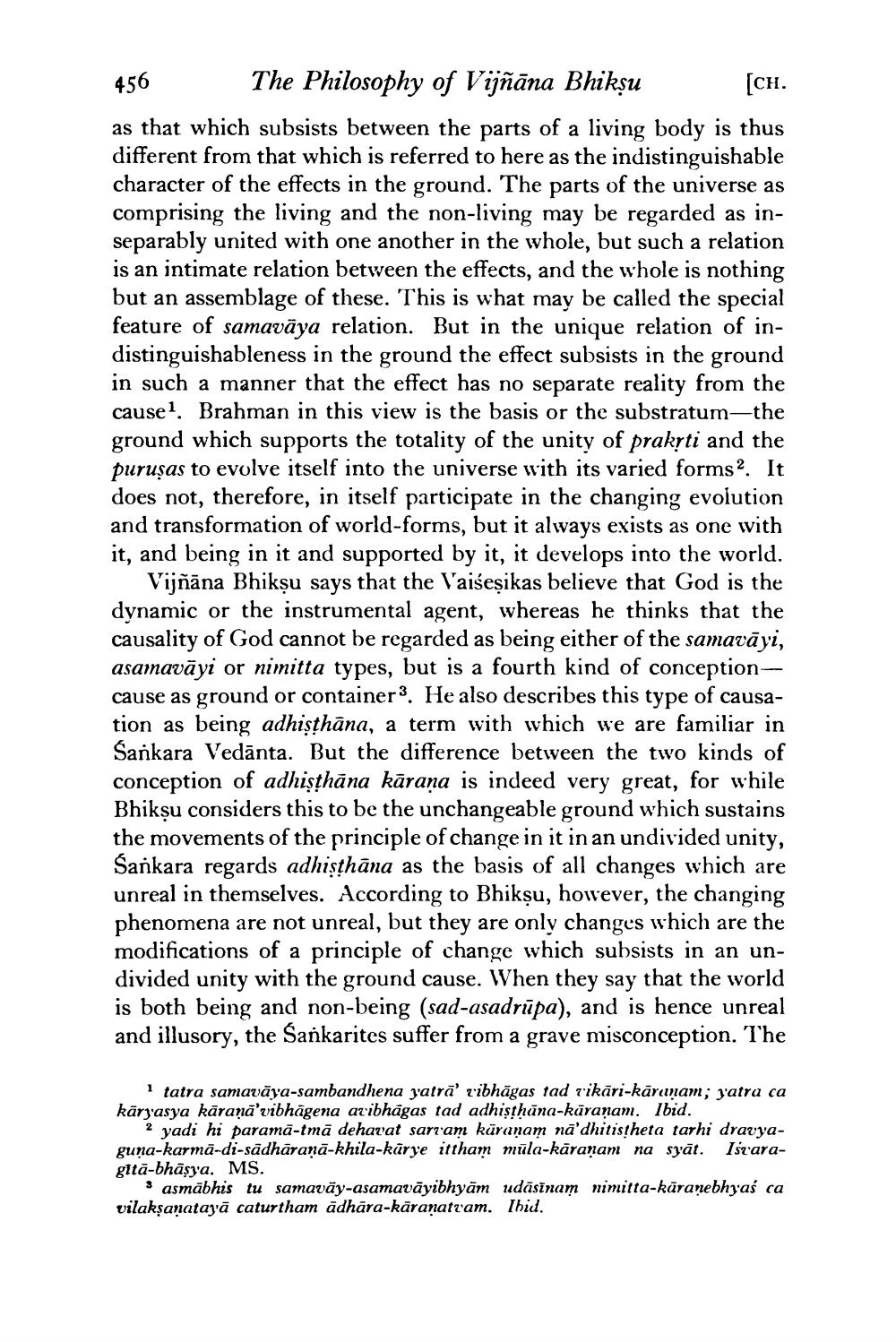________________
456 The Philosophy of Vijñāna Bhikṣu [CH. as that which subsists between the parts of a living body is thus different from that which is referred to here as the indistinguishable character of the effects in the ground. The parts of the universe as comprising the living and the non-living may be regarded as inseparably united with one another in the whole, but such a relation is an intimate relation between the effects, and the whole is nothing but an assemblage of these. This is what may be called the special feature of samavāya relation. But in the unique relation of indistinguishableness in the ground the effect subsists in the ground in such a manner that the effect has no separate reality from the cause?. Brahman in this view is the basis or the substratum-the ground which supports the totality of the unity of prakrti and the puruṣas to evolve itself into the universe with its varied forms. It does not, therefore, in itself participate in the changing evolution and transformation of world-forms, but it always exists as one with it, and being in it and supported by it, it develops into the world.
Vijñāna Bhikṣu says that the Vaiseșikas believe that God is the dynamic or the instrumental agent, whereas he thinks that the causality of God cannot be regarded as being either of the samavāyi, asamavāyi or nimitta types, but is a fourth kind of conceptioncause as ground or container3. He also describes this type of causation as being adhisthāna, a term with which we are familiar in Sankara Vedānta. But the difference between the two kinds of conception of adhisthāna kārana is indeed very great, for while Bhiksu considers this to be the unchangeable ground which sustains the movements of the principle of change in it in an undivided unity, Sankara regards adhisthāna as the basis of all changes which are unreal in themselves. According to Bhiksu, however, the changing phenomena are not unreal, but they are only changes which are the modifications of a principle of change which subsists in an undivided unity with the ground cause. When they say that the world is both being and non-being (sad-asadrūpa), and is hence unreal and illusory, the Sankarites suffer from a grave misconception. The
1 tatra samavāya-sambandhena jatrā ribhāgas tad tikāri-kāranam; jatra ca kāryasya kāraņā'vibhāgena avibhāgas tad adhisthāna-kāraṇam. Ibid.
2 yadi hi paramā-tmā dehavat sarram küranam nā'dhitistheta tarhi dravyaguna-karmā-di-sādharanā-khila-karye ittham mūla-karanam na syāt. Ištaragitā-bhāsya. MS.
s asmābhis tu samavāy-asamavāyibhyām udāsīnam nimitta-karanebhyas ca vilaksanatayā caturtham ādhāra-kāranatram. Ibid.




